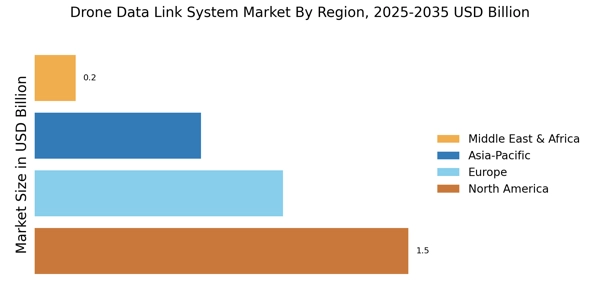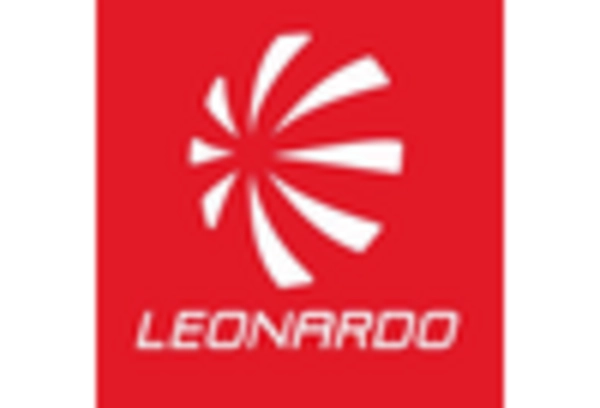Increased Demand from Various Sectors
The Drone Data Link System Market is witnessing increased demand from various sectors, including agriculture, construction, and logistics. In agriculture, drones equipped with advanced data link systems are used for precision farming, enabling farmers to monitor crop health and optimize resource use. The construction industry utilizes drones for site surveys and inspections, where reliable data transmission is critical for project management. Additionally, the logistics sector is adopting drones for last-mile delivery, necessitating robust data link systems to ensure timely and accurate deliveries. This diversification of applications is likely to propel market growth, as more industries recognize the benefits of drone technology.
Growing Investment in Drone Technology
Investment in drone technology is on the rise, significantly impacting the Drone Data Link System Market. Venture capital and government funding are increasingly directed towards drone startups and research initiatives, fostering innovation in data link systems. This influx of capital is expected to accelerate the development of next-generation data link technologies, enhancing their capabilities and performance. Furthermore, as more companies enter the drone market, competition is likely to drive down costs, making advanced data link systems more accessible to a broader range of users. This trend suggests a promising future for the market, as investment continues to fuel advancements in drone technology.
Regulatory Developments and Compliance
Regulatory developments play a crucial role in shaping the Drone Data Link System Market. Governments worldwide are establishing frameworks to ensure the safe and efficient use of drones, which includes stringent requirements for data link systems. Compliance with these regulations is essential for manufacturers and operators, as non-compliance can lead to significant penalties. The increasing focus on safety and security in airspace management is likely to drive demand for advanced data link systems that meet regulatory standards. As regulations evolve, the market may see a shift towards systems that offer enhanced security features, such as encryption and secure communication protocols, further influencing market dynamics.
Rising Awareness of Drone Applications
There is a growing awareness of the diverse applications of drones, which is positively influencing the Drone Data Link System Market. As industries become more familiar with the potential of drone technology, the demand for reliable data link systems is expected to increase. Educational initiatives and industry conferences are helping to disseminate knowledge about the benefits of drones in various fields, from environmental monitoring to emergency response. This heightened awareness is likely to lead to greater adoption of drone technology, thereby driving the need for sophisticated data link systems that can support a wide range of applications. The market may see a surge in demand as organizations seek to leverage drones for operational efficiency and data collection.
Technological Advancements in Communication
The Drone Data Link System Market is experiencing rapid technological advancements, particularly in communication technologies. Innovations such as 5G networks and satellite communication are enhancing data transmission capabilities, allowing for real-time data sharing and improved operational efficiency. These advancements are expected to drive the market, as they enable drones to operate over longer distances with minimal latency. The integration of artificial intelligence and machine learning into data link systems further enhances their functionality, providing operators with advanced analytics and decision-making tools. As a result, the demand for sophisticated data link systems is likely to increase, reflecting a broader trend towards automation and smart technologies in various sectors.


















Leave a Comment